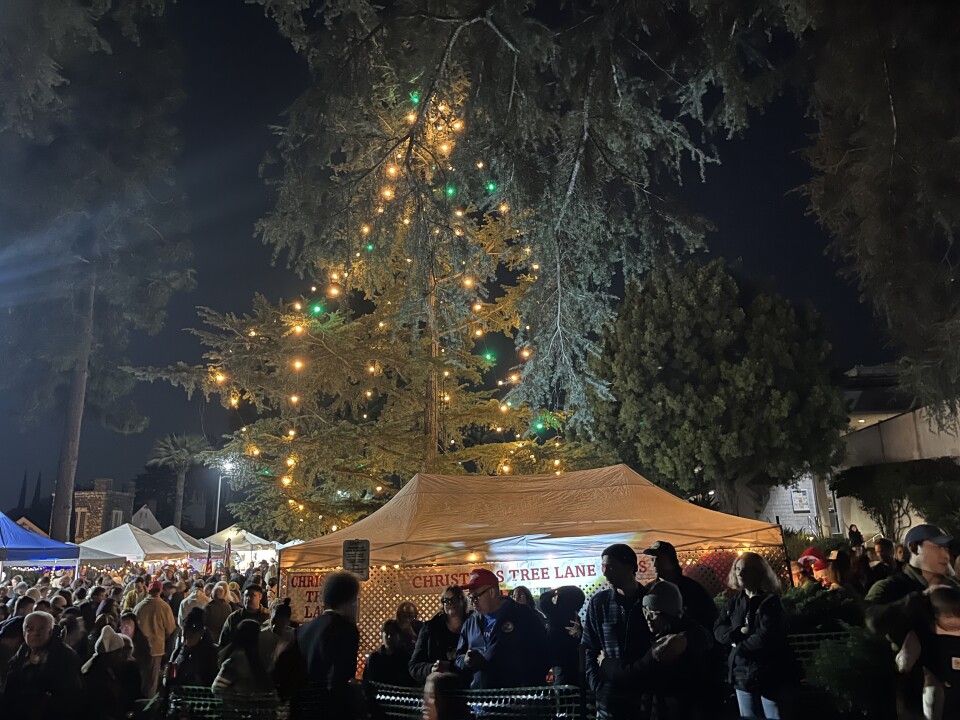If you found out your neighbor had a past criminal conviction, your knee-jerk reaction might be that you’d want them relocated.
But what if that person committed a burglary in their late teens, served years in state prison, turned their life around, and now mentors at-risk youth?
Do the details matter? Researchers found that they do.
A new poll by Goodwin Simon Strategic Research examines California voters’ attitudes toward due process for immigrants with criminal convictions during the Trump administration’s nationwide crackdown on unauthorized immigration. The survey also examined support for how tax dollars are spent and Californians’ views on the state’s sanctuary policies.
It found bipartisan support for ensuring that immigrants facing deportation receive due process, including ones with criminal records.
“This survey shows that there’s clear concern about the current administration’s approach to immigration enforcement,” said Sara Knight, a research director at Goodwin Simon Strategic Research. “I’m not surprised by the results, but I am heartened to see how strong the support for due process is and the growing frustration with treating people inhumanely in our immigration system.”
President Donald Trump campaigned on the promise of mass deportations that targeted criminals, among other things, and he has made good on that. Immigration and Customs Enforcement agents have arrested more than 160,608 noncitizens nationwide with criminal convictions or pending charges, since his inauguration.
The Trump administration has sought to expand the use of “expedited removal,” which allows immigration officers to remove certain non-citizens, like those convicted of crimes, from the United States without a hearing before an immigration judge.
Researchers say this latest poll by Goodwin Simon Strategic Research, released to CalMatters this week, also reflects waning support, even among a small majority of Republicans for the harshest immigration enforcement practices. It showed 84% of Democrats, 61% of independents, and 54% of Republicans agreed that “even if someone does have a record, they deserve due process and the chance to have their case heard by a judge before being deported.”
The poll was commissioned by the Immigrant Legal Resource Center and the National Day Laborer Organizing Network, both pro-immigrant organizations. Goodwin Simon Strategic Research describes itself on its website as an “independent opinion research firm.” Researchers wrote the survey questions and polled more than 1,200 self-identified voters. Knight said the partisan divide among those polled mirrored the party-affiliation split in the electorate. The margin of error was 3 points.
Some other recent polls echo similar conclusions released in recent weeks, including one released last week by UC Berkeley’s Possibility Lab that found one-third of Latino voters who supported Trump now regret their choice. Another public opinion poll by the nonpartisan research firm Public Policy Institute of California found 71% of Californians surveyed said they disapproved of the job ICE is doing. And, a CNN exit poll after the Proposition 50 redistricting election on Nov. 4 found that about three-quarters of California voters said they’re dissatisfied with or angry about the way things are going in the U.S., and 6 in 10 said the Trump administration’s actions on immigration enforcement have gone too far.
Tricia McLaughlin, an assistant secretary at the Department of Homeland Security, pointed to other recent national polls to argue the public supports Trump’s immigration policies.
“President Trump and (Homeland Security) Secretary (Kristi) Noem are delivering on the American people’s mandate to deport illegal aliens, and the latest polls show that support for the America First agenda has not wavered — including a New York Times poll that nearly 8 in 10 Americans support deporting illegal aliens with criminal records,” McLaughlin said in a written statement.
“The American people, the law, and common sense are on our side, and we will not stop until law and order is restored after Biden’s open border chaos flooded our country with the worst of the worst criminal illegal aliens,” she continued.
From prison to ICE
In the more recent Goodwin Simon Strategic Research poll, 61% of voters surveyed said they want California’s prison system to stop directly handing immigrants over to Immigration and Customs Enforcement for deportation.
The state’s sanctuary law does not apply to immigrants who have been convicted of serious crimes. State prisons have transferred to ICE more than 9,500 people with criminal records since Gov. Gavin Newsom took office in 2019, according to data released to CalMatters. So far in 2025, ICE has picked up 1,217 inmates directly from the California Department of Corrections and Rehabilitation, the data shows.
The corrections department also provides ICE with information that helps the agency locate, arrest, and deport people who are not directly transferred. CalMatters obtained and reviewed more than 27,000 pages of emails between state prison employees and ICE. The emails show prison employees regularly communicate with ICE about individuals in state custody, including U.S. citizens. They often share personal details about their families, visitors, and phone calls. Often, these family members have no criminal records and are U.S. citizens
Newsom, U.S. Senator Alex Padilla, and Speaker Robert Rivas have all denounced ICE’s broader deportation efforts. But all three have also indicated some level of support for having federal immigration officials remove noncitizens with prior convictions for violent crimes from the community.
The governor has stated he would veto legislation that seeks to restrict the state prison system’s ability to coordinate with federal immigration authorities for the deportation of felons.
‘We may be deporting the wrong people’
Goodwin Simon researchers found that voters’ opinions change when they find out more details about the personal circumstances of a noncitizen with a past criminal conviction, even for violent crime. Pollsters gave two narratives to voters.
One was about a man who was brought to the United States from Mexico as a child. He got into a fight in his early 20s that left someone injured. The man was sentenced to seven years in state prison, where he turned his life around by taking college classes and helping other inmates get their high school diplomas. When he got out of prison, he was deported to Mexico before an immigration judge could decide on his case.
The other narrative was about a person closely connected to a man whose family fled genocide in Cambodia when he was a baby. In the U.S., the man was the lookout for a robbery when he was a teenager and served 30 years in state prison. Upon his release, prison officials turned him over to ICE.
“We may be deporting the wrong people. Although this last person did commit a crime, he has served his time and is now a valuable member of society, so it would be hard to say for sure if a person ever committed a crime deserves to be sent back. That is why the due process is important,” one Republican voter from Sacramento responded to the poll. She shifted her opinion from the view that people with past criminal convictions should be automatically deported to favoring a judge reviewing each individual case after hearing the narratives.
After voters reviewed both pro- and anti-messaging and the two stories, support for having an immigration judge review individual cases before deportation increased from 84% to 90% among Democrats; from 61% to 74% among independents, but it dropped from 54% to 51% among Republicans. Central Coast voters and Republican women voters increased support for due process by 9 points after hearing the stories.


































